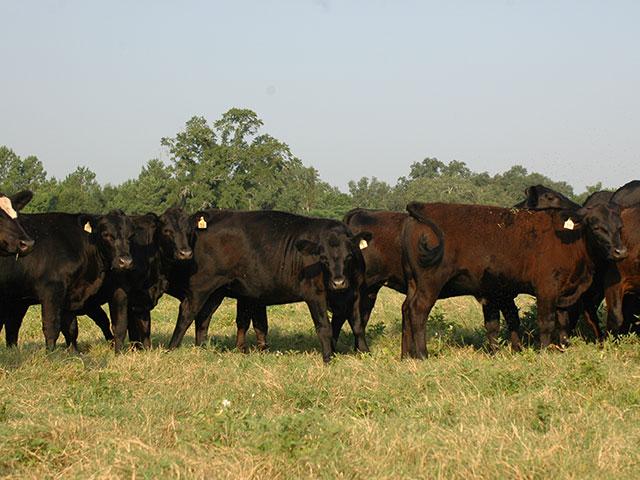Evaluate Heifers Before Breeding
Cow-Calf Producers Should Conduct a Pre-Breeding Heifer Check
OMAHA (DTN) -- Much like people reach maturity at different ages, individual heifers also mature at different times. Some might look like mature adults while others may look younger than their age. Extension specialists recommend cow-calf producers complete a pre-breeding heifer evaluation to help identify which heifers should be bred early and which should wait for later in the breeding season.
PRE-BREEDING HEIFER EVALUATION
In a recent Kansas State University (KSU) press release (https://www.ksre.k-state.edu/…), the topic of heifer development was addressed. Experts discussed factors that influence the pace at which heifers reach maturity. Most heifers reach puberty at 12 to 13 months of age, according to Kansas State University Extension veterinarian Bob Larson. Some Brahman-influenced breeds are a little older when they begin cycling.
Larson advised producers complete a pre-breeding evaluation for their heifers. This will help identify heifers most likely to breed early in the season, he said.
"The two things that drive maturity are their age and their body weight," Larson said.
When Larson conducts a pre-breeding evaluation, he assesses the animal's reproductive tract. As heifers near puberty, the tract begins to feel more like an adult's tract with a thicker, larger uterus and some follicle structures on the ovaries.
Larson said there are two main times these evaluations should be completed. First is six weeks before the breeding season. This evaluation gives an idea of when they will be cycling at breeding. By knowing this, producers would still have time to adjust their nutrition, he said.
P[L1] D[0x0] M[300x250] OOP[F] ADUNIT[] T[]
"The other time is when we are getting ready for a synchronization protocol and I can separate the ones that are not likely to get bred," Larson said.
BODY FAT MATTERS
Another factor affecting heifer development is the amount of body fat the animal carries, which can be controlled by the heifer's diet. KSU Extension specialists agree the easiest way to measure this is through weighing the heifers.
Phillip Lancaster, KSU Extension beef cattle nutritionist, said as heifers grow, they start to deposit more fat in each pound of gain and less muscle.
"So, when they get to about 60% to 65% of their mature weight, the hormones will signal to the body that it is time to ovulate," Lancaster said.
Larson said if these are retained heifers, producers often will know a target weight when their females in the herd start to cycle. While it varies among herds, for many that is about 850 pounds, he said.
Producers can safely increase nutrition to get more energy in their heifers' diet to push them to gain 2 to 2.5 pounds per day. If they start 70 to 90 days before the breeding season, many heifers will reach puberty on time, Lancaster said.
Six weeks before breeding, Lancaster said producers can evaluate the heifer's body condition and adjust accordingly.
OTHER SOURCES
Here are more sources regarding the evaluation of heifers for breeding purposes:
Russ Quinn can be reached at Russ.Quinn@dtn.com.
Follow him on X, formerly known as Twitter, @RussQuinnDTN.
(c) Copyright 2024 DTN, LLC. All rights reserved.




